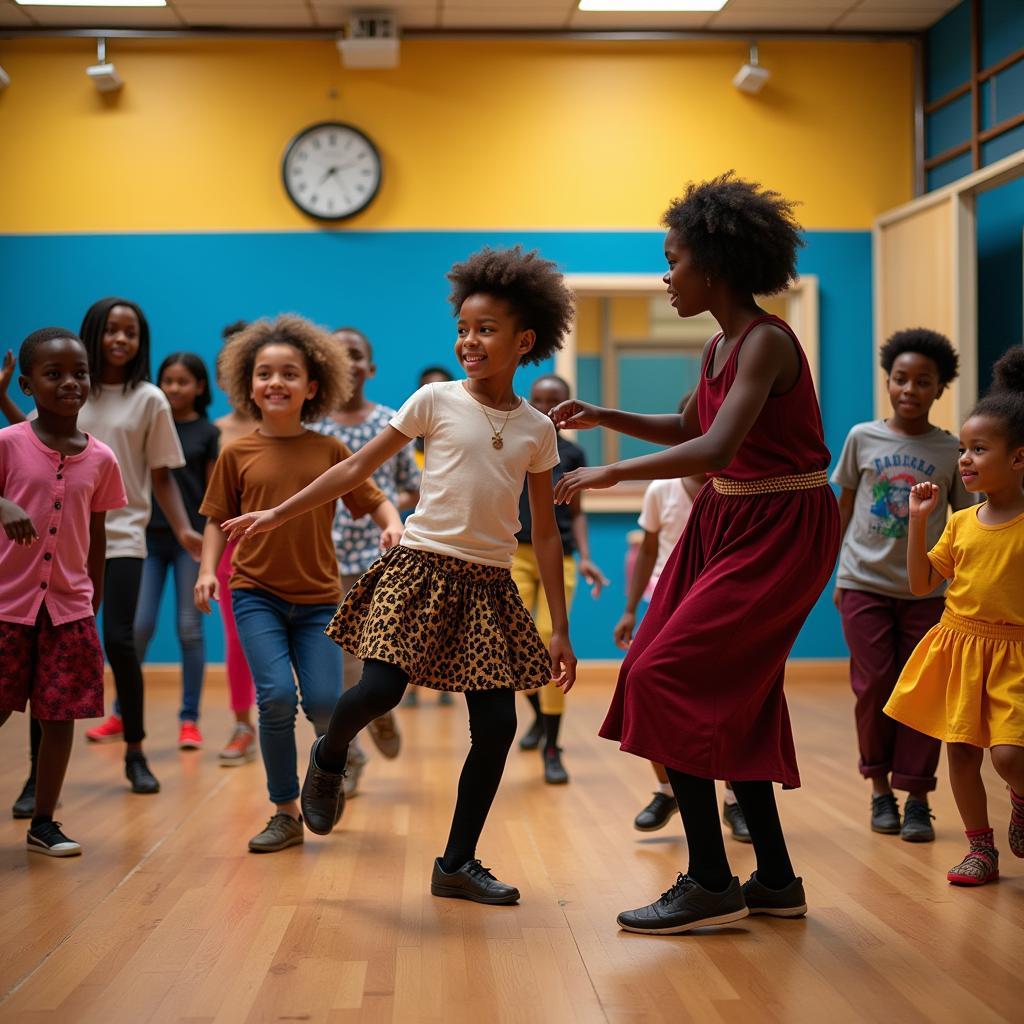African Children Dancing: A Celebration of Life, Rhythm, and Heritage
Dancing is an integral part of life in Africa, woven deeply into the fabric of culture, tradition, and daily existence. For African children, dancing is more than just movement; it’s an expression of joy, a form of storytelling, and a vital connection to their heritage. From a young age, children are enveloped in the rhythms and movements that have been passed down through generations, mirroring the pulse of the continent itself.
The Significance of Dance in African Culture
In many African cultures, dance transcends mere entertainment; it’s a powerful tool for communication, socialization, and spiritual expression. Dances often accompany important ceremonies and rituals, marking births, deaths, initiations, and harvests. They provide a platform for storytelling, preserving history, myths, and social values for future generations.
For children, participating in these dances is a rite of passage, fostering a sense of belonging and cultural identity. They learn the significance of the steps, the symbolism of the costumes, and the stories embedded within each movement.
Diverse Dance Styles Across Africa
The vastness of Africa is reflected in its incredible diversity of dance styles. From the energetic Zulu Indlamu dance of South Africa to the graceful movements of the Gnawa trance dances of Morocco, each region boasts its unique rhythms, costumes, and traditions.
For instance, in West Africa, children learn dances like the Kpanlogo from Ghana, known for its fast-paced footwork and improvisational elements. Similarly, in East Africa, the Maasai children engage in the Adumu, a jumping dance that celebrates their transition into adulthood. These diverse styles are a testament to the continent’s rich tapestry of cultures and traditions.
The Role of Music in African Dance
Music and dance are inseparable in Africa. The rhythmic beats of drums, the melodic tunes of string instruments, and the harmonious vocals all converge to create the soundtrack for these vibrant dances. Children grow up surrounded by this musical landscape, developing an innate sense of rhythm and timing.
It’s not uncommon to see young children spontaneously breaking into dance upon hearing a familiar beat. The music fuels their movements, providing a framework for expression and improvisation. This natural affinity for music and rhythm is nurtured from infancy, becoming an integral part of their identity.
Modern Influences and the Evolution of Dance
While traditional dances remain deeply cherished, contemporary influences have also shaped the African dance landscape. Modern dance forms, often blending traditional movements with contemporary styles, have emerged, captivating audiences worldwide.
African children are increasingly exposed to these evolving styles, embracing the fusion of the old and the new. Dance schools and studios are incorporating both traditional and modern techniques, ensuring the preservation of heritage while fostering innovation and creativity.
 A group of children practice dance moves in a bright studio, guided by an instructor
A group of children practice dance moves in a bright studio, guided by an instructor
Preserving Tradition Through Dance
In a rapidly changing world, dance serves as a powerful tool for cultural preservation in Africa. By teaching children traditional dances, communities ensure the continuity of their heritage, passing down values, stories, and artistic expressions to future generations.
Organizations and individuals are working tirelessly to promote and preserve African dance forms through workshops, festivals, and educational programs. These initiatives aim to instill a sense of pride in younger generations, ensuring that these vibrant expressions of culture continue to thrive.
Conclusion
The sight of African Children Dancing is a celebration of life, a testament to the power of rhythm, and a vibrant expression of cultural heritage. From traditional ceremonies to modern studios, dance remains an integral part of their lives, connecting them to their roots and shaping their identities. As these children grow, they carry the legacy of their ancestors in their hearts and their feet, ensuring that the rhythm of Africa continues to resonate for generations to come.